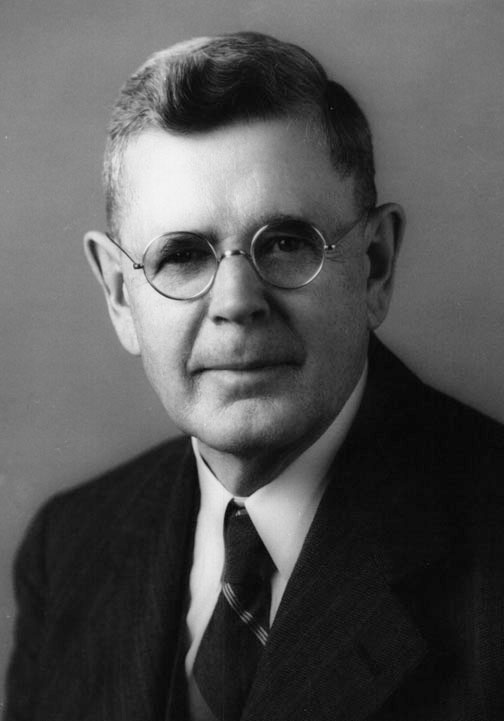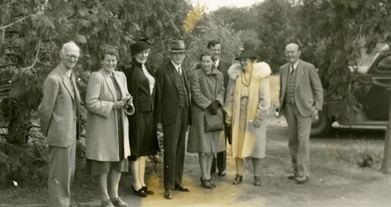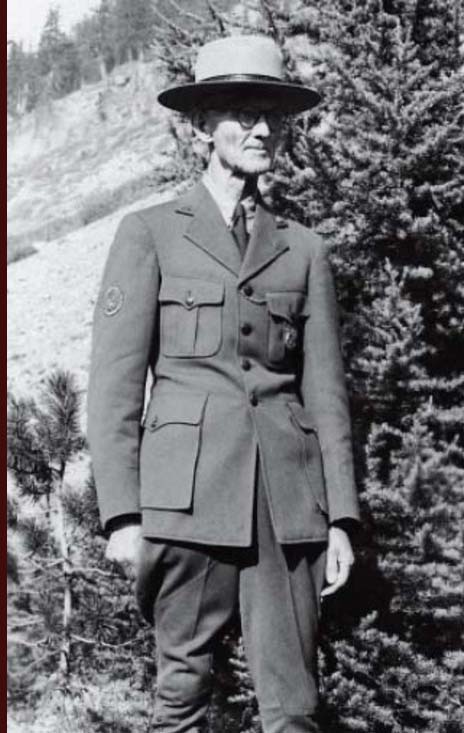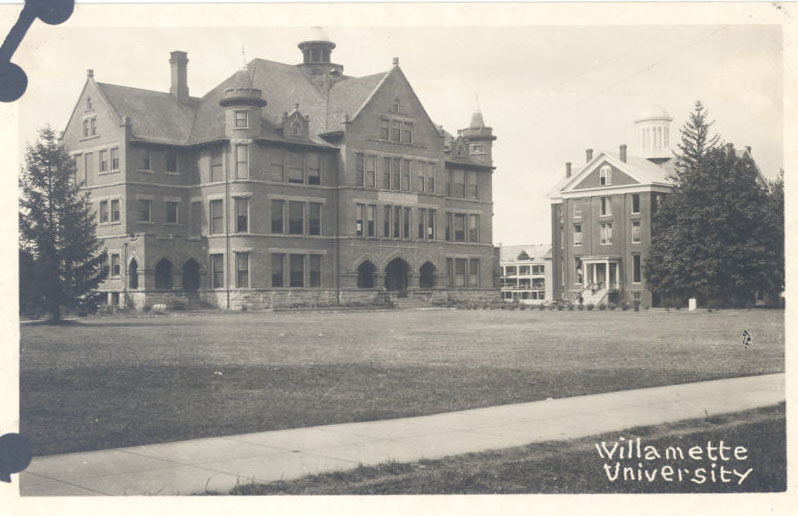Born in a log cabin in Iowa on March 12, 1871, Morton Peck was an inspiring teacher and botanist, esteemed for his knowledge of Oregon flora. His lifetime collections, which he began at age eleven, included over 40,000 plants, 1,600 slime molds, and over 50 new species that are now in major world herbaria. Peck also strived to identify western plants and habitats.
As a student at the University of Iowa, Peck’s passion was the intimate study of plants. He labored fondly over slime molds, classifying and collecting over a thousand "tiny, beautiful" myxomycetes with botanist Thomas Macbride, who was Peck's mentor. Peck illustrated the slime molds in watercolor prints that he later used in classes.
Peck’s first professorship was at Ellsworth College in Iowa, where he extended his observations to birds and mammals. During his tenure at the college, his expeditions included a float trip down the Mississippi River, a train ride to New Orleans, and passage on a United Fruit Company steamer to British Honduras. He also journeyed to Belize with his new wife, Jessie Grant, a former botany student.
In 1908, Peck accepted a position at Willamette University, where students considered him a "wondrously square" teacher with great common sense. The sole biologist in the College of Liberal Arts, Peck wrote that he "enjoyed teaching work thoroughly." His scholarly explorations flourished in Oregon, and his botanical expeditions ranged from Cape Lookout on the Oregon coast to the Three Sisters near Bend. Trips were financed through personal income and the sale of herbarium specimens (8 cents/sheet) that formed part of the U.S. Biological Survey.
Peck’s influence on taxonomic botany is preserved in many namesakes for plants and fungi, including rare penstemons (Penstemon peckii) and grasses (Poa peckii). He wrote about large trees (Oracle Oak), conifer diversity (Modoc cypress), and the need to protect "primitive areas," foreshadowing the modern concept of Research Natural Areas. His knowledge of the flora of the Wallowa, Steens, and Cascade ranges, Lincoln Constance wrote, was "incomparable" and was achieved after often difficult travel by foot or horseback in remote areas.
Peck's expertise in floristics, taxonomy, and phytogeography are evident in his Manual of the Higher Plants of Oregon and the Peck Herbarium of Willamette University (WILLU), which honors his extensive collections. Many praised his floristic manual for its format and lightweight size, its phylogenetic keys, new records, and thorough descriptions of plants and physiographic provinces. Arthur Cronquist, a well-known systematist and eventual director of New York Botanical Garden, noted that Peck’s collection of Oregon plants was “the most complete, so far as I know that exists." Three years before his death in 1959, Peck characterized the herbarium as the "sole interest to which I have a modicum of energy remaining to devote...for which I daily feel indebted."
Peck achieved many awards during his life. He was elected to the American Ornithological Union in 1909. In 1943, Phi Beta Kappa and Sigma Xi named him an Outstanding Scientist, and the Oregon Federation of Garden Clubs honored him as a distinguished horticultural researcher in 1958. The Morton Peck Scholarship is awarded annually to Willamette undergraduates with botanical interests. Today, his pioneering efforts provide the only comprehensive manual of Oregon's flora. Moreover, the Peck herbarium is an enduring record of the plants that grew in our western states for over fifty years. His dried and pressed specimens are still examined regularly by those seeking to understand invasive weeds, rare plants, and the diverse habitats associated with them.
-
![Morton Peck, about 1936.]()
Peck, Morton, ca. 1936.
Morton Peck, about 1936. Photo Bishop Moderne Studios, courtesy Univ. and Jepson Herbaria, Univ. of Calif., Berkeley
-
![(L to R): Elmer Applegte, Roxana Ferris, Mrs. M. E. Peck, M. E. Peck, Mrs. L. Constance, I. L. Wiggins, MRs. L. R. Abrams, and L. R. Abrams, 1937.]()
Peck, Morton, and others, 1937.
(L to R): Elmer Applegte, Roxana Ferris, Mrs. M. E. Peck, M. E. Peck, Mrs. L. Constance, I. L. Wiggins, MRs. L. R. Abrams, and L. R. Abrams, 1937. University and Jepson Herbaria, University of California, Berkeley
Related Entries
-
![Elmer Ivan Applegate (1867-1949)]()
Elmer Ivan Applegate (1867-1949)
Elmer Ivan Applegate was an important early Oregon botanist best known …
-
![Willamette University]()
Willamette University
Willamette University, the oldest university in the West, was founded i…
Map This on the Oregon History WayFinder
The Oregon History Wayfinder is an interactive map that identifies significant places, people, and events in Oregon history.
Further Reading
Chambers, K. "News of herbaria. Morton E. Peck Herbarium." Taxon 26 (1977): 160-161.
Constance, L. "Morton E. Peck." Taxon 9 (1960): 165-167.
Gilkey, Helen M. "TORRYEA: Morton E. Peck." Bulletin of the Torrey Botanical Club 87 (1960): 280-282.
Kephart, S. "Morton E. Peck: Field Botanist, Poet, and Author of A Manual of the Higher Plants of Oregon." Kalmiopsis 7 (2001): 1-7.






